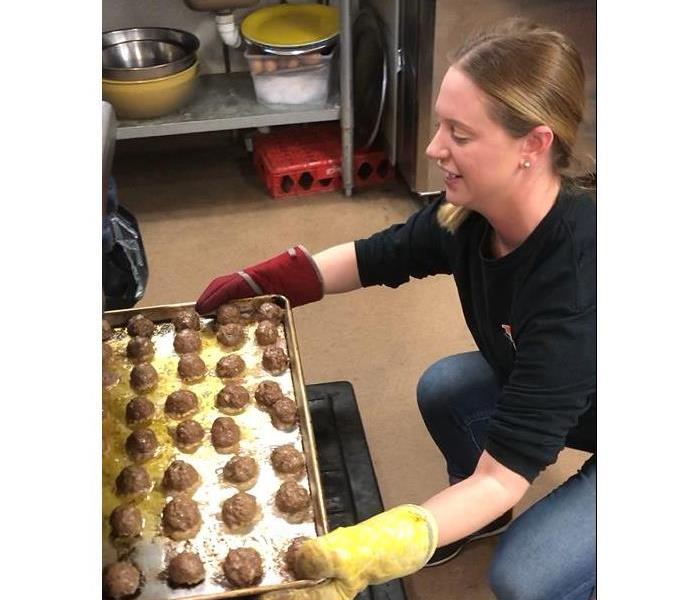Fire Safety For Your Kitchen
9/13/2019 (Permalink)
According to the National Fire Protection Association, cooking is the number one cause of house fires with unattended cooking being associated with the majority of these fires. Here are some tips from the National Fire Protection Association to follow in your kitchen:
- Keep a fire extinguisher on hand and make sure you know how to use one. It’s also important to use the correct type of extinguisher for the fire you’re fighting.
- Use caution and stay alert! If you are sick, intoxicated or sleep deprived, it’s safest to avoid using the oven or stovetop until you feel healthier.
- Keep flammable items like plastic and wooden utensils, curtains, paper towels, food packaging and oven mitts away from your stovetop.
- Use a timer to remind you to check on your food regularly. It is important to keep an eye on what you’re cooking, especially if it’s being cooked at high temperatures (broiling, frying, boiling, etc…).
- Don’t leave hot oil unattended. When you are frying food, it’s important to always stay put and keep an eye on it as hot frying oil can become a dangerous situation rapidly. Gradually heat the oil to the temperature needed for sautéing or frying. If the oil becomes too hot, lower the heat or carefully remove the oil from heat immediately. Wisps of smoke are one sign that the temperature of the oil is too high. Keeping a thermometer specifically designed for frying can help you keep the oil at an ideal temperature.
- If you are cooking in a pan, keep a lid nearby while you cook. If the pan catches fire, slide the lid over the pan and immediately shut off the burner. Leave the lid on and let the pan cool.
Find these tips and more on the NFPA website!





 24/7 Emergency Service
24/7 Emergency Service
